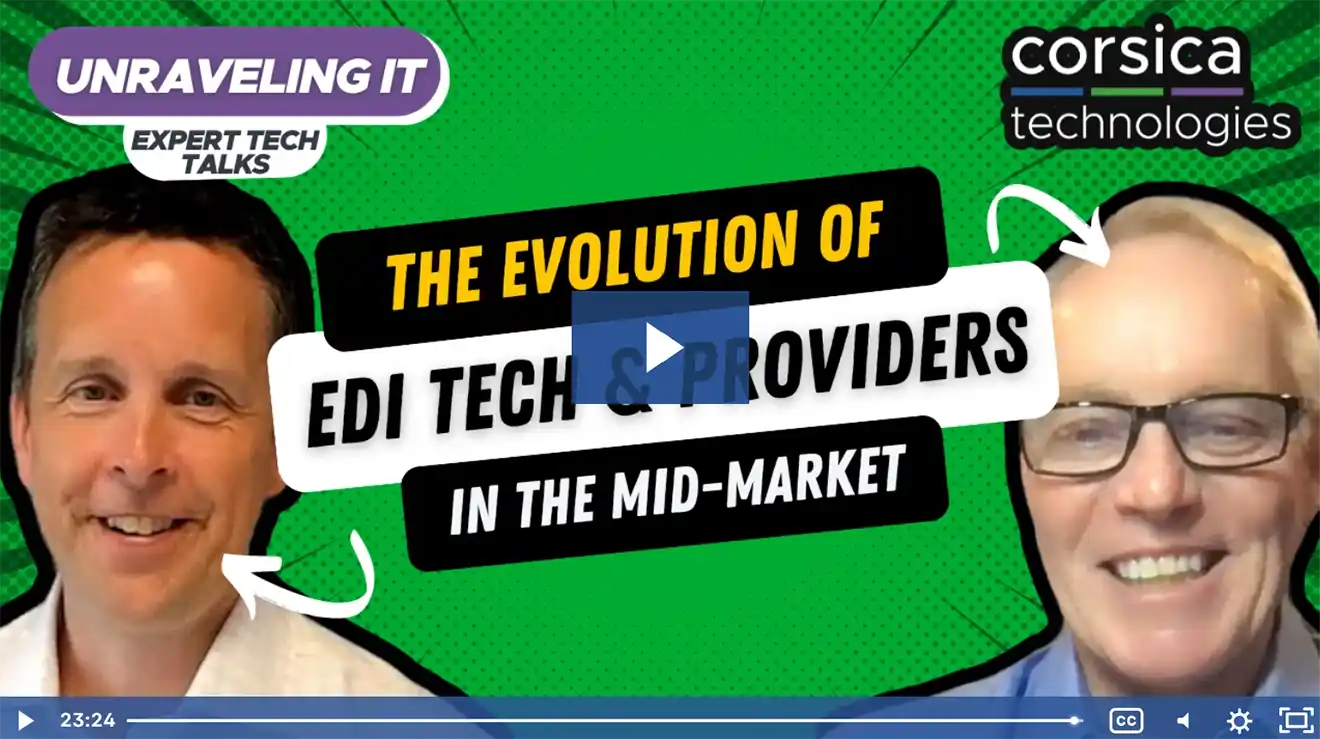In the world of EDI, “transaction” and “document” are synonymous. They both refer to a file format or document exchanged through EDI. “Transaction” doesn’t necessarily mean a financial transaction, although EDI can handle accounting processes; rather, it just means a transaction of information between two EDI systems.
There are numerous EDI transactions that you may need to use, depending on your industry, your processes, and your EDI data standard. That said, here are the most common EDI documents that we see. Since our clients work primarily with data standards like ANSI X12, HIPAA, and EDIFACT, we’ll focus on those.
Most common ANSI X12 EDI transactions (i.e. EDI document types)
ANSI X12 is one of the most common EDI data standards in North America. If you’re using EDI to support processes like O2C (order to cash) or P2P (procure to pay), you’ll probably interact with these documents—and many others—on a regular basis.
1. Sales and pricing catalog (832)
The days of print catalogs are over! Utilizing the EDI 832 document type allows a business to provide their catalog and prices to a trading partner electronically. The document supports images as well as text, which allows businesses to place their products in the best possible light. Since it’s distributed and accessed electronically, an EDI 832 ends the hassle of print catalogs, which become outdated the moment they arrive.
2. Request for quote (840)
After a buyer has reviewed a catalog, they may want to request a quote for a product. Perhaps the product is priced by quote only, or perhaps the buyer wants to negotiate their own pricing based on unique quantity requirements or their own market leverage. Whatever the scenario, sending an EDI 840 allows a buyer to request a quote from a supplier.
3. Response to request for quote (843)
After a buyer has sent an 840, the seller will respond with an 843, which functions as the quotation document that the buyer requested. An 840 gives the buyer pricing, available inventory, relevant delivery schedules, and any other information related to the potential sale.
4. Purchase order (PO or 850)
When a buyer is ready to place an order, they send an EDI 850 purchase order to the supplier. This document contains relevant information like PO number, RDD (requested delivery date), products ordered (UPC or SKU and quantity), line-item pricing, total price, and more. As you can see, EDI 850 is the bedrock of any buyer/supplier relationship using the ANSI X12 data standard.
5. Invoice (810)
How do you send or receive invoices today? Methods like paper, email, and PDF attachment are commonplace, but they can create errors when clerks reenter data into your backend systems. If you can send and receive 810s, with full integration to your ERP, you can eliminate those errors and reduce your cost of processing financial documents. That’s the value of EDI 810.
6. PO change request and acknowledgment (860/865)
How do you send a change request for a PO? In the world of ANSI X12, the buyer sends an EDI 860, which communicates the requested changes to the purchase order. The supplier replies with an EDI 865. This document indicates how the change request has been handled, including things like altered quantities and prices, additional line items, and so on.
Note: A seller can also send an EDI 865 as a request to the buyer to change an existing purchase order. At a high level, the buyer-sent document is the 860, while the supplier-sent document is the 865.
7. Advance shipment notice (ASN or 856)
Buyers often need advance notice that a shipment is coming their way. This is especially true for products that have sensitive handling requirements (for example, those that require refrigeration)—or for warehouses that operate on thin operational margins and need some warning to free up storage space. Whatever the use case, the EDI 856 or advance shipment notice lets the buyer know when to expect a shipment.
Most common HIPAA EDI transactions (i.e. documents)
In the healthcare industry, HIPAA regulation dictates exactly how documents are exchanged via EDI. This precision ensures careful handling of sensitive patient information. It also assists with portability of medical records between different providers.
HIPAA standards are derived from ANSI X12, so you’ll see the same numbering conventions. Here are the most common HIPAA documents that our healthcare clients use.
1. Benefit enrollment and maintenance (EDI 834)
This critical document allows an organization to enroll members in a healthcare plan. An EDI 834 covers essential information like new or altered enrollments, removal from enrollment, and changes to enrollee benefits. It empowers organizations to process healthcare enrollment electronically rather than relying on paper-based processes.
2. Eligibility/benefit inquiry (EDI 270)
Medical practices and hospitals use EDI 270 documents to ask health insurance providers about relevant coverage for specific patients. This document replaces processes such as sending forms in the mail or calling to ask about coverage.
3. Eligibility/benefit response (EDI 271)
This is the response to an EDI 270. A health insurance provider uses an EDI 271 to provide requested information about coverage for a specific patient.
4. Healthcare claim submission (EDI 837)
The EDI 837 document replaces paper-based processes for submitting claims. This document contains essential data like the patient’s information, the condition that was treated through specific services, the cost of those services, and so on. Medical practitioners typically send EDI 837s to HMOs, PPOs, Medicaid, and Medicare.
5. Claim status request (EDI 276)
Once a practitioner has submitted a claim through an EDI 837, they can send a 276 to ask about the status of that claim. This eliminates the need for phone calls, faxes, emails, or snail-mail documents.
6. Claim status notification (EDI 277)
The organization that processed a healthcare claim can use an EDI 277 to respond to the practitioner’s request for the status of that claim. Like every other transaction here, 277 removes the need to send documents in the mail or place a phone call.
Most common EDIFACT transactions (i.e. documents)
The EDIFACT data standard, which is widely used in Europe, has its own document types. While many of these are functionally equivalent to documents in the ANSI X12 standard, EDIFACT has its own naming conventions. If you’re using EDIFACT, here are some common transactions you may see.
1. Price/sales catalog (PRICAT)
A supplier sends a PRICAT to customers to present the latest version of its catalog with updated prices. This is the equivalent of EDI 832 in the ANSI X12 data standard.
2. Purchase order (ORDERS)
A customer sends an ORDERS document to a supplier to place a purchase order. This is the equivalent of EDI 850 in the ANSI X12 data standard.
3. Purchase order response (ORDRSP)
A supplier sends an ORDRSP to a customer to acknowledge a purchase order (ORDERS) or change request (ORDCHG). The ORDRSP document lets a customer know that their order-related communication was received and processed.
4. Delivery forecast (DELFOR)
“Delivery forecast” might sound like it’s coming exclusively from a supplier or shipping partner. However, this EDI meaning in shipping works in multiple directions.
A buyer can send out a DELFOR to a supplier, alerting them of time-sensitive requirements for materials. A supplier can also send back a DELFOR proposing a different quantity of product to be delivered. This can alert the buyer that they need to source some or all product from another supplier.
















